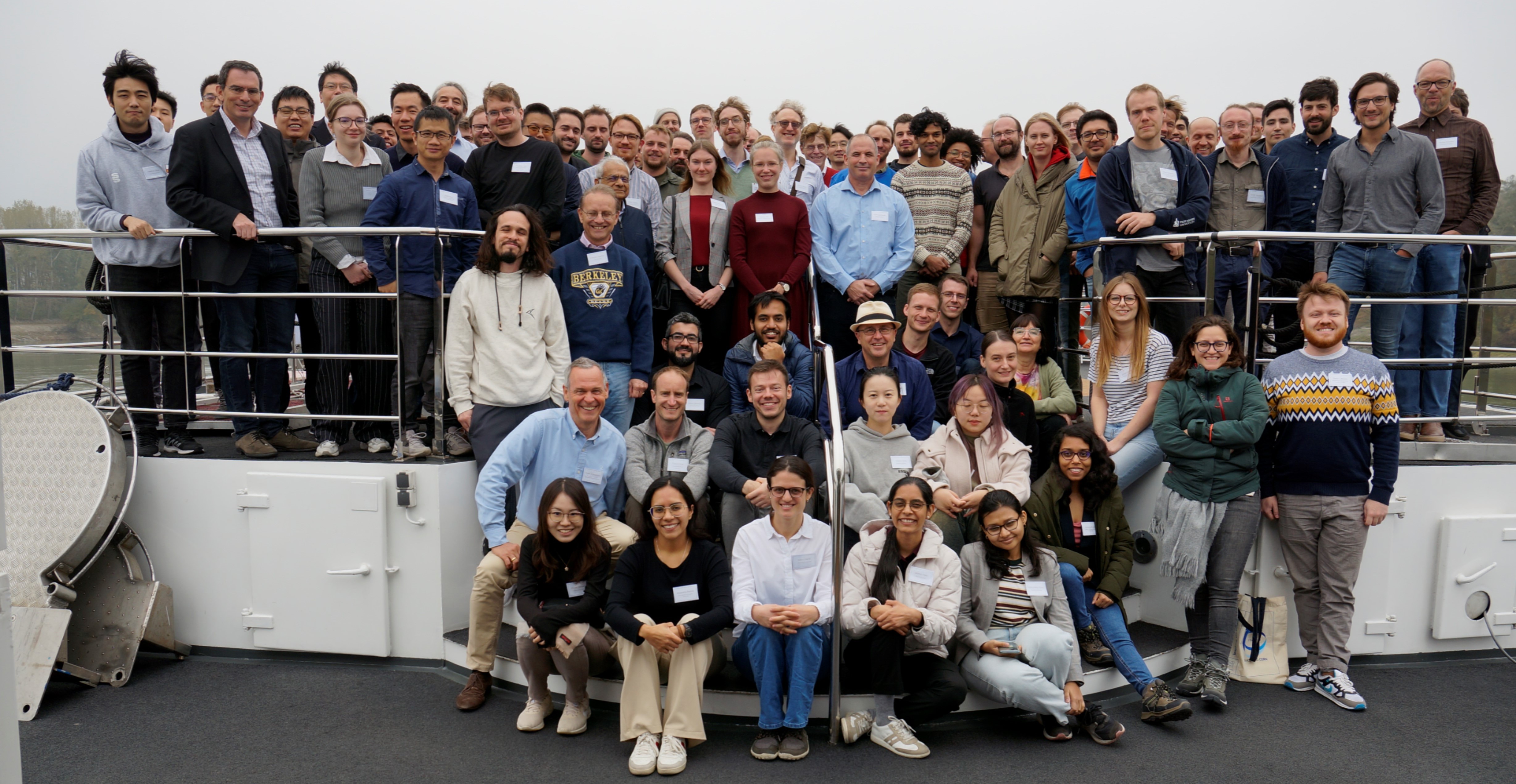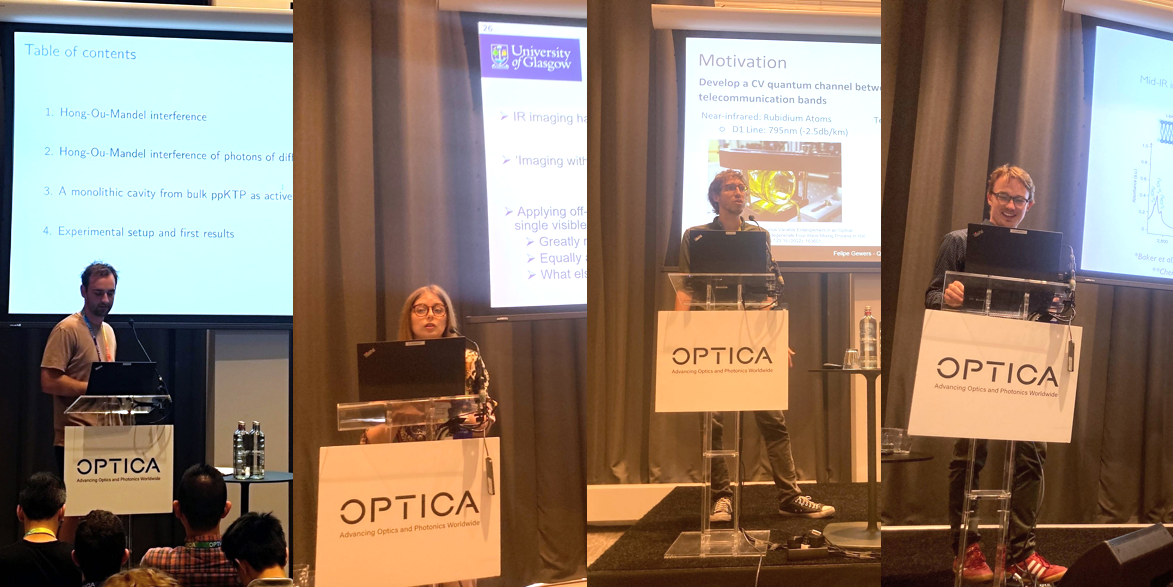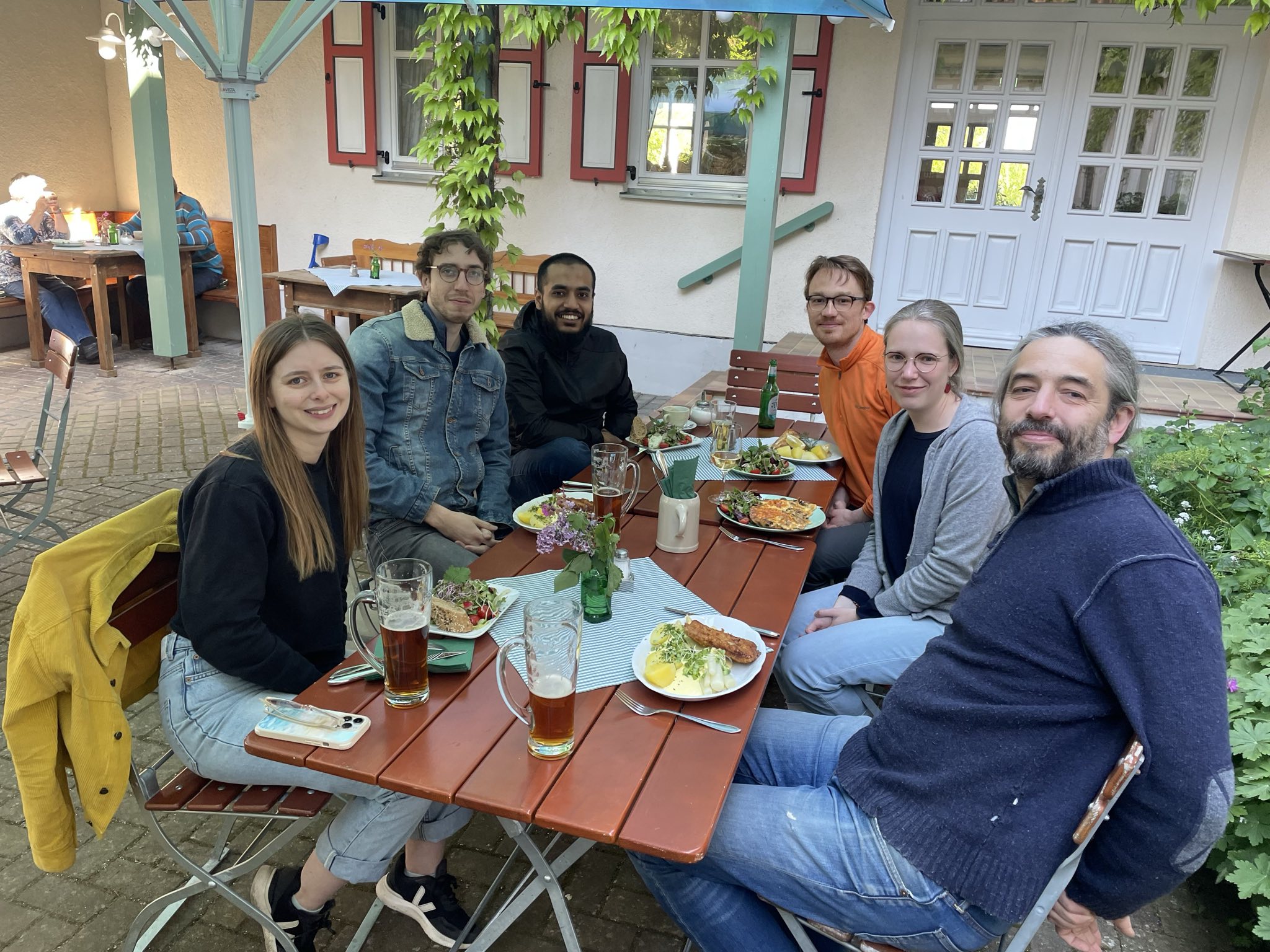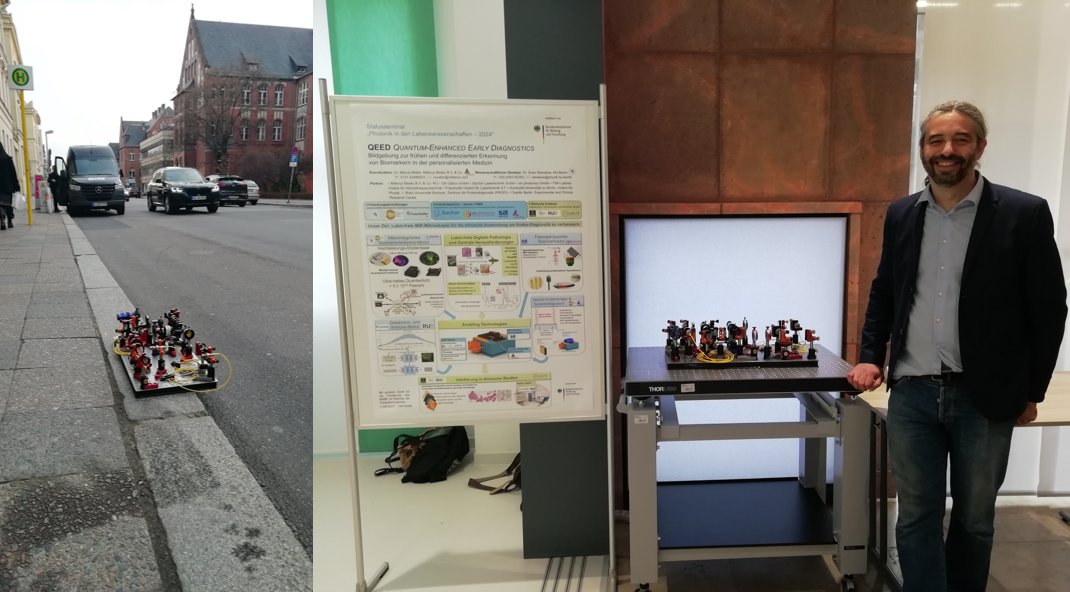Archive
November 18, 2024
Felix's latest Optics Express paper was highlighted as an Editors Pick - Sven: "Super well deserved!" :)
November 11, 2024
And there were already 10 of them... We welcome Theresa to our group as a new Bachelor student!
November 06, 2024
A two-hour lecture by Nobel Prize winner Alain Aspect at the French Embassy - felt much shorter - what an amusing speaker! And a glass or two of red wine afterwards to get into conversation...
November 04, 2024
Felix has published his paper on "Noise analysis of a quasi-phase-matched quantum frequency converter and higher-order counter-propagating SPDC". Congratulations!
October 31, 2024
We spent a fantastic 3 days with the 'Sensing with Quantum Light' community on board the beautiful MS Crown on the Danube during our self-organized SQL24. From the first talk by Bob Boyd to the last evening in the hot tub on deck, it was perfect all round!

October 21, 2024
We are happy to welcome Anna as a new PhD student!
August 01, 2024
We are delighted to have Helen back in the group as a senior postdoc!
July 01, 2024
A week of Quantum 2.0 in Rotterdam! Very interesting talks (4 from us) and poster sessions (2 from us), discussions, lab tours in Delft, lots of coffee, overnight stays on a boat, no evening without drinks and even Sven got his karaoke night. Conclusion: it was a success!

May 09, 2024
Premiere! For our first NiQO retreat, we spent a few days in the beautiful Uckermark, getting a glimpse of the group's current and future projects. Bonfires, stick bread, Settlers (Felipe won, surprisingly beating Marlon), and sauna sessions all added to the great vibes.

April 25, 2024
Marlon has published his paper on "Telecom-Band Spontaneous Parametric Down-Conversion in AlGaAs-on-Insulator Waveguides". Congratulations!
April 18, 2024
A round of mini-golf in beautiful weather with cool drinks – who could say no to that?

April 08, 2024
Soon we are going to Rotterdam! With 4 talks and 2 posters, we are looking forward to an interesting week at Quantum 2.0 at the end of June.
March 14, 2024
Today Sven, Marthe and Marthe's experiment (see kerb) were at the BMBF status seminar "Photonics in the life sciences". Lots of interesting talks and conversations!

February 05, 2024
And there were 7 of them... We welcome Emma Pearce from England and are delighted that Felipe Gewers has found his way back to us from Brazil!
January 25, 2024
Applications for SQL24 are open!
The "Sensing with Quantum Light" workshop will go into the next round from 27-31 October 2024. This time with a very special venue: on the river cruise ship MS Swiss Crown from Passau to Vienna and back. Details can be found on the workshop website: https://sql24.hu-berlin.de/.
November 03, 2023
Felix has published his paper on "Low-noise quantum frequency conversion in a monolithic cavity with bulk periodically poled potassium titanyl phosphate". Congratulations!
October 23, 2023
We are renewing our group website! From now on you will find regular news about our research and activities in the group!
And here are the things from the literal archive...
Open position for bachelor / masters student
June 30, 2021
We currently have a project proposal for either a bachelor or masters student to work on a thesis in our group; if you are interested in quantum optics with very practical applications, please find more information here (pdf).
Pushing quantum frequency conversion to the next level
November 23, 2016
The paper on “Ramsey Interference with Single Photons”, Sven was working on during his time at Cornell University together with Stephane, Alessandro and Alex was finally published today at Physical Review Letter [1]. Philipp Treutlein has written a very nice Viewpoint [2] explaining lucidly the background. (THX!)
Conventionally, quantum frequency conversion is used to as fully as possible transfer photons (coherently) from one frequency to another. For different reasons, e.g. to improve detection efficiencies or to convert photons to the telecom band for optimal transmission through optical fibers.
But what happens if you stop exactly “half-way” in the conversion process? Quantum mechanically you end up with a super-position state of a single photon being in two different energy states. This is somehow interesting and cool. But how to proof one really has a proper (coherent) superposition state? And is this maybe even useful for something?
For other quantum systems (like spins of single electrons, single atoms/ions…) such energy superposition states between a ground and excited (electronic) state very are well known. One way to produce them is to apply a so called Pi/2-pulse. By then letting the system freely evolve (and pick up a phase) and subsequently applying another Pi/2-pulse one realizes a so called Ramsey Interferometer. And this type of quantum interferometer is very widely used for a plethora of applications.
So, to demonstrate that we indeed can generate single photons in a genuine quantum super-position of two colors and that this might even be useful for something, we set out to for the first time realize Ramsey Interference with single photons. The technical challenge of this is, that the quantum frequency conversion has to work so well, that you can cascade two conversion processes and implement a controllable phase in between. And this is exactly what we did.
As a side-remark, in all “traditional” Ramsey schemes there is always the possibility that the quantum superposition of the ground and excited state spontaneously decays into the ground state by coupling to the electro-magnetic (vacuum) field. For photons, which are themselves the quanta of the electro-magnetic field, no such decay channel (at least in vacuum) exist, making it fundamentally special.
[1] Stéphane Clemmen, Alessandro Farsi, Sven Ramelow, and Alexander L. Gaeta, "Ramsey Interference with Single Photons", Physical Review Letters 117, 223601 (2016)
[2] Philipp Treutlein, "Photon Qubit is Made of Two Colors" (2016)
Advertising of open positions
November 22, 2016
We are currently preparing a call for outstanding PhD and Posdoc candidates in experimental quantum optics. The experimental research topic in the newly established group at Humboldt University Berlin will be quantum imaging and spectroscopy based on nonlinear quantum optics with single photons. It will span a broad range of research goals from fundamentally overcoming classical limitations of imaging and spectroscopy to engineering proto-types for real-world applications including as bio-medical imaging and sensing.
The work will be supervised by the group leader Dr. Sven Ramelow, who has a wide background on photonic quantum optics as well as a broad network of international collaborations, thus there will be the possibility for scientific research stays abroad for all group members.
The Institute for Physics of the Humboldt University in Berlin, with its strong focus on optics and photonics research, offers an excellent setting. There are several closely related experimental groups such as the Nanooptics group of Prof. Oliver Benson and the Optical Metrology group of Prof. Achim Peters working in very close collaboration sharing resources as well as lab and offices spaces generating a divers and international working environment.
Moreover, the City of Berlin offers a cosmopolitan living atmosphere with an international vibe, and (still) affordable costs of living.
For the PhD position you must have a master degree or equivalent (or close to finishing one) in physics or a related discipline with excellent grades. You must be highly motivated, and enjoy hard working in a team and be fluent in English language and have or be willing to acquire German language skills as well. For PhD candidates experience working in an optical lab can be beneficial, as well some bio-imaging or spectroscopy background. For postdoc candidates some experience in bio-imaging is required.
If you are interested and you want to find out more, you can already send an e-mail with a CV and motivation letter to sven.ramelow@physik.hu-berlin.de . Please also include two to four people who have worked with you and who may be contacted to provide recommendation letters.
Founding of the workgroup Nonlinear Quantum Optics
October 5, 2016
(Source: Institut für Phsyik)
